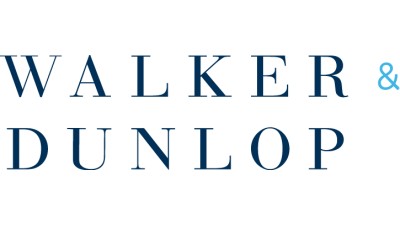Peter Linneman On Job Growth, Housing Demand And Why Multifamily Is The Safest Investment

As we head into Q4 2021, it’s time to take a look back on the previous quarter and analyze what the past few months mean about the future of the market. Where is commercial real estate headed in 2022? How far along is the economy in its recovery from the coronavirus pandemic?
Few people are more qualified to answer these questions and others than Peter Linneman. Linneman is the principal of Linneman Associates, the CEO and founder of American Land Fund and of KL Realty, who previously served as the Albert Sussman Professor of Real Estate, Finance, and Public Policy at the Wharton School of the University of Pennsylvania. His Linneman Letter — a quarterly publication that looks back on the previous fiscal quarter and dissects what it means for CRE and beyond — has become famous in industry circles for its insightful content.
On this week’s Walker Webcast, Linneman spoke with Walker & Dunlop CEO Willy Walker about the current state of the market, the economy, and what all of this means for CRE investors and professionals.
Walker started off by summarizing the most recent Linneman Letter, which he said called for current investors to buy assets now and finance them cheaply with either fixed or floating rate debt. Don't worry about inflation or interest rates, he added, cap rates will compress from here — just keep buying, specifically in multifamily and industrial.
Linneman agreed with that interpretation of his letter and dove into another topic that is important to him: the labor market. He said the most recent ADP data showed September was a much better month for jobs than the previous two months, due in no small part, Linneman suggested, to the elimination of the additional unemployment benefits issued in response to the pandemic.
Despite these gains, he said, there are still some employers who are hesitant to bring employees back because they are unsure that their industry is truly back from the pandemic.
“As a result, we try to get more work out of the existing labor force,” Linneman said. “But you can't do that forever. You can do it for six months, you can do it for a year when there's not a lot of alternatives. But eventually what happens in every recovery is [you've] got to bring back more labor.”
With this in mind, he believes that 3.5 million people will return to the workforce in the next six to nine months, and there will be an additional 2 million or more jobs added as the economy continues to grow.

Moving on to housing, Linneman projected that the U.S. will deliver 1.1 million single-family homes and 500,000 multifamily units in 2021. He predicted the country will deliver 1.2 million to 1.4 million single-family homes and around 450,000 multifamily units in 2023-24. He also said, however, that the U.S. is experiencing little to no population growth. This led Walker to ask where Linneman thinks this demand for additional housing will come from.
Linneman said that despite slow population growth, there are a lot of people currently living with their parents or doubling up with roommates who will soon want to seek out their own homes. Additionally, many elderly people passed away during the pandemic and their relatives received inheritances sooner than anticipated, which may lead to more people being able to afford the down payments on a house.
“A lot of grandparents died over the last 18 months, years earlier than they otherwise would have and that's a tragedy. But it did mean bequests came years earlier than anybody thought,” Linneman said.
Despite this potential increased demand for single-family homes, Linneman still thinks multifamily is a safe investment because it has one truly unique advantage over other asset classes: the protection of Fannie Mae and Freddie Mac.
“If Freddie and Fannie lent in the same way to shopping centers, shopping centers would be a more attractive investment,” Linneman said. “Why? Because it deepens the capital pool, and real estate's about availability of capital and predictability. And multifamily has better depth and predictability of capital than any other sector. And in that sense, it is unambiguously safer.”
As for office, Walker told Linneman he has been speaking to many CEOs who are unsure of when they will bring people back to the office full time. With this in mind, he asked Linneman if he would be more comfortable investing with Boston Properties or a coworking provider like WeWork right now.
Linneman chose Boston Properties because at the end of the day, it is common knowledge that people waste time even when they are in the office, so it goes without saying they likely waste even more time at home. Eventually, he said, that will catch up to them.
On Oct. 13, Walker will host Richard Tedlow, professor of business administration at the Harvard Business School. Register here for the event.
This article was produced in collaboration between Walker & Dunlop and Studio B. Bisnow news staff was not involved in the production of this content.
Studio B is Bisnow’s in-house content and design studio. To learn more about how Studio B can help your team, reach out to studio@bisnow.com.

